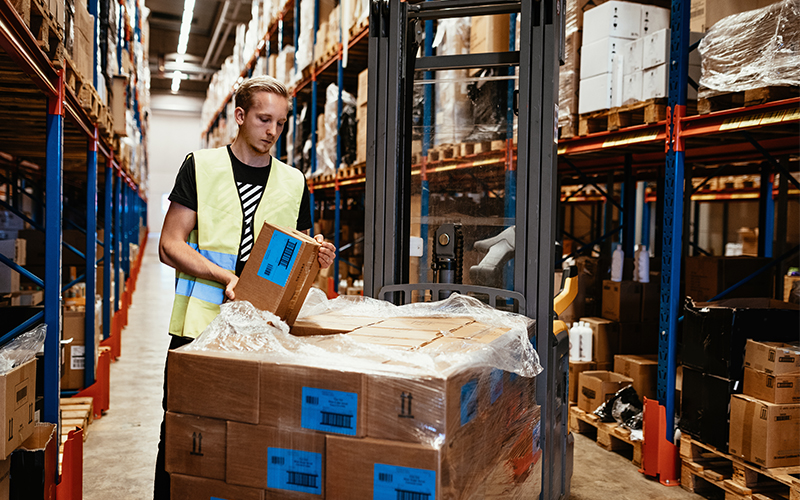There’s tremendous excitement when buying a new car. A lot of people can relate to the experience of bidding goodbye to an old faithful with nostalgia, and the excitement of a kid in a candy store while researching for a new one. In the past 18 months, the excitement has turned to anxiety for many. Until 2.5 years ago, a new car would arrive at the customer’s doorstep in just a week, at least all the popular models. But now, delivery dates are moving, each week by about 3 weeks. On an average, the total time elapsed from the date of booking to the date of delivery was at least 6 months with extremes going up to 10 months. Broken supply chains have impacted the automotive industry. Reasons for delays range from a single chip being unavailable to long wait times for whole smart car systems, and no visibility into expected arrival dates. For the first time perhaps, automotive giants like Volvo and Volkswagen are struggling to meet customer expectations.
Before the pandemic, companies on an average experienced one-to-two-month disruptions in supply chains, every 3.5 years or so. Since the onset of covid-19 and the Russia-Ukraine war, disruptions emerge almost daily. The impact, over a decade, is valued at about 45% of the total profits of a company. Several countries and organisations decided to localise or nearshore operations to decouple tightly integrated supply chains.
In this article, we examine the pros and cons of supplier diversification and briefly highlight 3 diversification strategies for companies to consider.
Supply chain resiliency is the ability of a company to sense, respond, adapt and navigate unexpected supply chain disruptions and recover from them with minimal impact on operations and customer commitments. Diversification in the supply chain is a means of improving resiliency alongside strategies like nearshoring, inventory planning and forecasting, and scenario-based planning. Diversifying suppliers and manufacturing partners traditionally relied on social, environmental and political stability. With changes coming rapidly, how can a company effectively diversify to improve resilience?
With more suppliers in the chain, the chances of things going wrong multiply exponentially. Each supplier point added is a potential failure that could result in an impact on the performance and reputation of companies. There are more than just first and second level suppliers. The 3rd, 4th and 5th layers add more complexity. There are also regulatory, compliance and environmental factors that need to be monitored to ensure the company is doing the right thing, and pragmatically so.
In order to diversify systematically, companies should consider the following strategies:
- Visibility across the chain through a combination of structural and dynamic visibility capabilities. The structural aspect is implemented by mapping the multi-supplier network with risk assessment and network assessment to develop a risk model. With continuous monitoring and prediction the model is updated and solutions are prescribed so the network can automatically respond in case adverse events occur. Such visibility enables companies to see where suppliers and points of manufacturing are, analyse and examine logistic routes and inter-relationships across the network and determine potential risks and weaknesses.
- Digital twins supporting manufacturing operations. This is a new paradigm for manufacturing companies to implement a digital twin by capturing data from all existing systems, contextualising it to represent attributes and operating processes of all assets, and determining how the system performs with simulations. Sharing this data with the requesting company and others in the supply chain network enables everyone to better understand how to respond to unprecedented events.
- Automating warehouses by developing a broad vision of the warehouse system to transform operations across the supply chain. This is done in a 3-step approach:
- Building a strong core warehouse system to automate responses by integrating execution and the workforce to enable faster, safer and more efficient day-to-day operations.
- Deploy technology to gather intelligent insights to improve delivery times, cut costs and build more sustainable and scalable operations
- Smart design of warehouse solutions to maximise human-machine collaboration to drive efficiency and customer-centric operations
At the core of all that’s being talked about is an organisation's assessment of its resilience in terms of risk appetite, who its critical partners are, what it needs to protect, trade-off decisions, who pays for investments in resilience or the outcomes from it and finally handling government and trading bloc incentives that bring manufacturing closer to end customers.
A good way to start is with small, incremental and continuously improving steps while constantly balancing costs, bottlenecks and capabilities. Increasing resiliency in an era of constant supply chain disruptions takes time to implement a strong backbone and processes. The process must be inclusive, agile and sustainable.
*For organizations on the digital transformation journey, agility is key in responding to a rapidly changing technology and business landscape. Now more than ever, it is crucial to deliver and exceed on organizational expectations with a robust digital mindset backed by innovation. Enabling businesses to sense, learn, respond, and evolve like a living organism, will be imperative for business excellence going forward. A comprehensive, yet modular suite of services is doing exactly that. Equipping organizations with intuitive decision-making automatically at scale, actionable insights based on real-time solutions, anytime/anywhere experience, and in-depth data visibility across functions leading to hyper-productivity, Live Enterprise is building connected organizations that are innovating collaboratively for the future.








